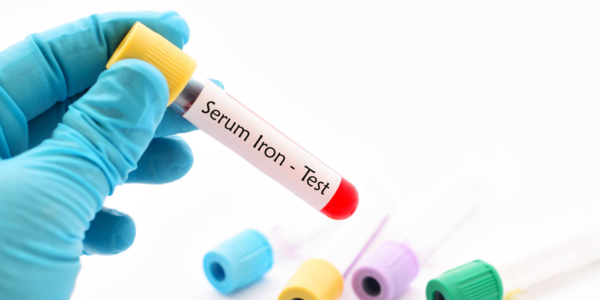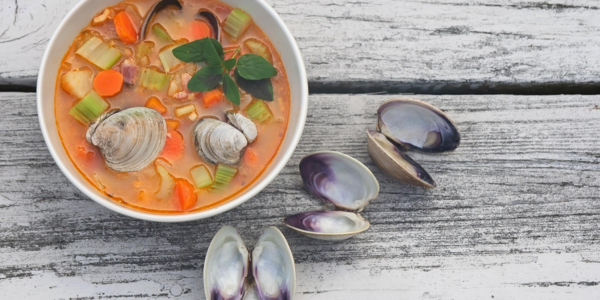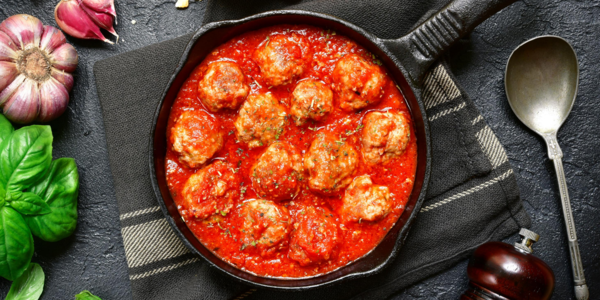|
This month we have been focusing on the top five vitamin and mineral deficiencies that are commonly found in athletes: magnesium, calcium, vitamin D, and zinc. This is the last of the series on this week we are diving into iron. Iron deficiency is near and dear to my heart because I struggled with it for YEARS (and still do if I’m not being mindful and proactive with my iron intake). The fatigue I struggled with was no joke. I chalked it up to over-training, but even after days off, I still felt horrible. And I know I’m not alone. Endurance athletes, especially female runners, have been identified as being high risk for developing iron deficiency. A recent review from The University of Western Australia, Edith Cowan University, and the WA Institute of Sport found that up to 35 percent of female athletes are iron deficient compared to about five percent in the general female population. Male athletes were also iron deficient by approximately 11 percent compared to one percent of the general male population. Exercise can inhibit the body's ability to absorb iron which puts athletes at a higher risk for iron deficiency than those that don’t exercise regularly. This poses a large concern for athletes because iron deficiency can leave you feeling lethargic and fatigued, it can hinder your ability to recover properly from exercise and in general, it reduces your athletic performance. THUMBS DOWN to that! SIGNS OF DEFICIENCY Early onset of iron deficiency can be asymptomatic. But if left untreated, it can lead to a whole host of symptoms and even iron deficiency anemia. Iron deficiency is a condition resulting from too little iron in the body. It is the most common nutritional deficiency and the leading cause of anemia in the world. Anemia is a condition in which you do not have enough hemoglobin in your red blood cells. Hemoglobin is the protein molecule in red blood cells that is responsible for carrying adequate oxygen from the lungs to the body’s tissues and returns carbon dioxide from the tissues back to the lungs. Iron plays a role in the production of hemoglobin in the body, which explains why iron deficiency and anemia are so closely related. So if you want to breathe easy during exercise, you can see why having enough iron is important! You can also see why one of the leading symptoms of iron deficiency and iron deficiency anemia is shortness of breath. Other symptoms include:
RISK FACTORS Menstruating women are at a high risk for iron deficiency and iron deficiency anemia due to monthly blood loss. If those women also run (especially on hard surfaces, like asphalt or cement), they have an increased risk due to a condition called hemolysis. Hemolysis is the destruction of red blood cells and the shock of multiple foot strikes on hard surfaces mile after mile damages red blood cells. Vegans and vegetarians are also at high risk for iron deficiency and iron deficiency anemia. This is because the most absorbable form of iron is mostly available in animal products. What limited iron is available from plant based foods is limited in its absorption due to the phytic acid found on these foods. Soaking, sprouting and/or fermenting can help make the iron in plant foods more bioavailable. Any condition that results in blood loss can lead to iron deficiency and iron deficiency anemia, including heavy menstruation, pregnancy, frequent or excessive blood donation, fibroids, digestive tract disease (including infections), surgeries and accidents. Alcohol and aspirin abuse have also been shown to reduce iron levels in the body. TESTING The tests most commonly used to detect iron deficiency are:
A diagnosis of iron deficiency can only be made by a medical professional when a person has both low hemoglobin and hematocrit, low mean corpuscular hemoglobin (MCH) (functional ranges should be between 27.7-32), low serum ferritin and high red blood cell distribution width (RDW)(functional ranges should be between 11.7%-15%). Iron deficiency without anemia is diagnosed when a person has a normal hemoglobin, but below normal serum ferritin. It is not uncommon to see a CBC ordered on a standard annual blood panel, but no iron panel ordered. If you check your latest blood panel and you don’t see an iron panel, check your CBC for both hemoglobin and hematocrit. If one or both are low, it is in your best interested to talk to your doctor about ordering an iron panel. If you need help ordering or interpreting your blood work to see if you show signs of iron deficiency or iron deficiency anemia, reach out to me. I’m happy to review your blood panel and help point you in the right direction. You should never self-diagnose an iron deficiency. There are many reasons your iron panel can look off on paper and just taking an iron supplement without consulting a professional can result in iron overload, which is a very dangerous condition. Iron overload can cause hepatic cirrhosis, diabetes, hyperpigmentation of the skin and cardigan failure. FOOD SOURCES While I am a huge advocate of incorporating lots of plants into your meals, it has been found that those with iron deficiency should reduce their intake of all plant based foods and instead focus their meals around iron-rich foods. If you are a vegetarian due to ethical reasons, then some of the foods you can focus on to up your iron levels include:
The Recommended Dietary Allowance (RDA) of iron for all age groups of men and postmenopausal women is 8 mg/day; the RDA for premenopausal women is 18 mg/day. Here is a list of some iron rich food sources:
Additionally, the level of iron will increase in your foods if you cook them in a cast iron skillet. This is especially true for high-acid foods such as applesauce, eggs, and tomato-based recipes as these foods encourage the leaching of iron out of the pan. The greater the acidity of the food and the longer you cook it, the more iron is transferred. Generally speaking, one cup of acidic foods cooked in a cast iron pan will gain about six to eight milligrams of iron. Note that highly acidic foods, like tomatoes and citrus juices, should not be cooked in a brand new cast iron pan until the cookware has been highly seasoned. You can achieve a higher bioavailability of dietary iron by increasing the content of food components that enhance iron absorption, such as ascorbic acid, and by decreasing the content of inhibitors, such as phytates and tannins found on unsoaked plant foods. As previously mentioned, aim for 500-1000mg of vitamin C per meal to optimize the absorption of iron. The body has a remarkable ability to regulate the uptake of iron through the intestines, so overdose with food consumption is rare and usually only occurs when people take supplements. One more reason to also optimize your diet before jumping to taking a supplement! SUPPLEMENTS If diet and digestion have been optimized, and any diseases resulting in a loss of blood have been ruled out, but iron levels are still low, supplementation can be helpful. Many iron supplements cause constipation and other undesirable side effects, so only use them as a final resort. Iron is present in two forms: heme iron and non-heme iron. Heme iron is absorbed from the gut with greater efficiency. Therefore, when supplementation is necessary, look for a natural form of heme iron, like this one. When taking iron supplements, try to avoid taking it with meals or other supplements as this can decrease the absorption of the iron. Since iron supplements can have unwanted side effects, I typically recommend clients take their iron supplement at least 2 hour after their last meal of the day, right before bed. IN SUMMARY Iron is an important mineral necessary for many biological pathways, but especially for carrying oxygen throughout the body. Various degrees of deficiency can occur in all athletes and can result in symptoms that range from very little to severe fatigue. Iron deficiency, even if not anemic, can have an adverse effect on athletic performance.
There are many causes of iron deficiency which include poor iron intake, menstrual losses, gastrointestinal bleeding, foot strike hemolysis, and even sweat losses. For these reasons, athletes are a higher risk for iron deficiency than sedentary people. Female athletes, runners and vegan/vegetarian athletes are also higher risk. If you have or are experiencing shortness of breath (especially with every day activities like walking up a flight of stairs), fatigue, heart palpitations, hair loss, dizziness, depression, cold sensitivity (or low body temperature), loss of interest in daily activities such as work, recreation and relationships, restless leg syndrome or pica (the desire to chew ice), you should get your iron levels tested. Either talk to your doctor about testing options, or reach out to me for testing and a comprehensive evaluation of your blood results. As with ALL the minerals we’ve discussed this month, iron doesn’t work independently to itself so exploring lifestyle factors and other iron cofactors can have a significant impact on your iron status. Don’t sit back and be fatigued when you can make a few changes to your diet and lifestyle and feel energized again!
0 Comments
Leave a Reply. |
AuthorTiana Rockwell is a certified nutritional therapist, avid endurance athlete and dark chocolate lover. She believes that by eating REAL food, we can balance our body and reach optimal health and wellness! Archives
May 2022
Categories
All
|







 RSS Feed
RSS Feed